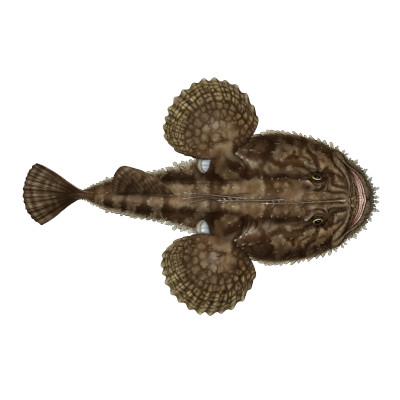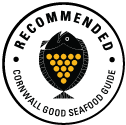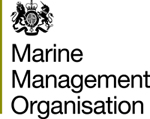

Overall stocks of monkfish are healthy with stable landings and a reduced fishing effort in recent years and healthy stocks of both species. Black bellied monkfish make up a significant proportion of landings (approx. 30%) in our area, this is of concern. Monkfish are long lived and vulnerable to fishing effort but reduction in quotas and restrictions on deep water netting for monkfish have improved the sustainability of this stock. According to ICES fishing pressure is well below sustainable levels and the stock is increasing in biomass in the Celtic sea and Bay of Biscay.
The use of acoustic pingers is mandatory for all gill netting boats over 12m in length, fishing outside the 6 mile limit, and this has reduced the problem of accidental bycatch of cetaceans, however many of our smaller inshore boats are not using any by catch mitigation despite evidence that cetaceans and particularly the harbour porpoise can become entagled in monk nets. Cornish fishermen have cooperated fully with fisheries scientists in improving selectivity of gear, and carried out a major research project on Western anglerfish between 2003 and 2012 until government funding was pulled. A Fisheries Improvement Plan (FIP) has been set up by the industry with the aim of improving sustainability of the Western and Channel Monkfish fishery. Best choice is net or demersal trawl caught monkfish landed by day boats to Cornish ports.
A total of 1560 tonnes of both species were landed to Cornish ports in 2021, with a value of £5.54 million.
Updated July 2023

Cornwall VII e,f,g and h
A large trawl held open by paravane trawl doors, the open net is then pulled along in contact with the seabed
Learn more
Cornwall VII e,f,g and h
Caught using heavy beam trawl nets that are dragged over the seabed.
Learn moreCornwall VIIe f g and h
Large mesh 'tangle nets' are set on the seabed to target monkfish, turbot, spider crabs and crawfish.
Learn moreCornwall Good Seafood Guide rates fish on sustainability using a scale of 1 to 5.
1, 2 and 3 are recommended, Fish to avoid are rated 5.
We use the system devised by the Marine Conservation Society (MCS) so our scores are comparable with the scores produced by MCS for the UK and fisheries from all around the world. For more information on scoring click here.
Monkfish are a slow-moving fish that waits on the seabed for its prey, small fish, which it lures to its huge mouth using a modified dorsal fin-ray as a lure. Two species of monkfish are caught by Cornish fishermen. The white monkfish Lophius piscatorius and the less common, black bellied monkfish Lophius budegassa. Monkfish are a long-lived species. Maximum reported age is 24 years. Females mature at 9-11 years at about 70 - 90cm, males at around 6 years at 50cms. Females can attain a length of 2m and a weight of 40kgs. Males rarely grow beyond 1m. Monkfish spawn between January and July, in deep water off the edge of the continental shelf, in water depths down to 1000m. They do not spawn in the areas most commonly fished by Cornish fishermen. Eggs are released in a buoyant, gelatinous ribbon or 'egg veil' that may measure more than 10m in length. Monkfish are also found in coastal waters with the continental shelf of the Cornish coast being an important area for juveniles. The species vulnerability score is high (69% for L. budegassa. (Cheung et all 2009, www.fishbase.org).
Black bellied monkfish are commonly caught by beam trawlers, by gill netters and by demersal trawlers. They are a valuable component of the catch. There are issues with unwanted by-catch of dolphins and porpoises in gill nets but the EU regulation making the use of cetacean scaring pingers mandatory in boats over 12m in length has reduced the risk of this being a problem for many of the larger boats working offshore, although use of pingers by smaller boats is still not mandatory and by catch is not documented by the industry.






Cornwall Good Seafood Guide is underpinned by the Marine Conservation Society (MCS) Good Fish Guide. The first UK consumer guide to sustainable seafood. For more information visit www.fishonline.org
Cornwall Good Seafood Guide is here to help us all make sustainable seafood choices. Choices that will help us keep the oceans healthy and Cornish fishers' futures safe. This website is funded by Cornwall Wildlife Trust. If you would like to make a meaningful difference to the health of our oceans, please consider making a donation to the Cornwall Wildlife Trust Ocean Emergency fund. Your donation will help safeguard these remarkable environments, ensuring that they continue to thrive for generations to come. Together, we can be stewards of the seas and champions for a healthier, more sustainable future.